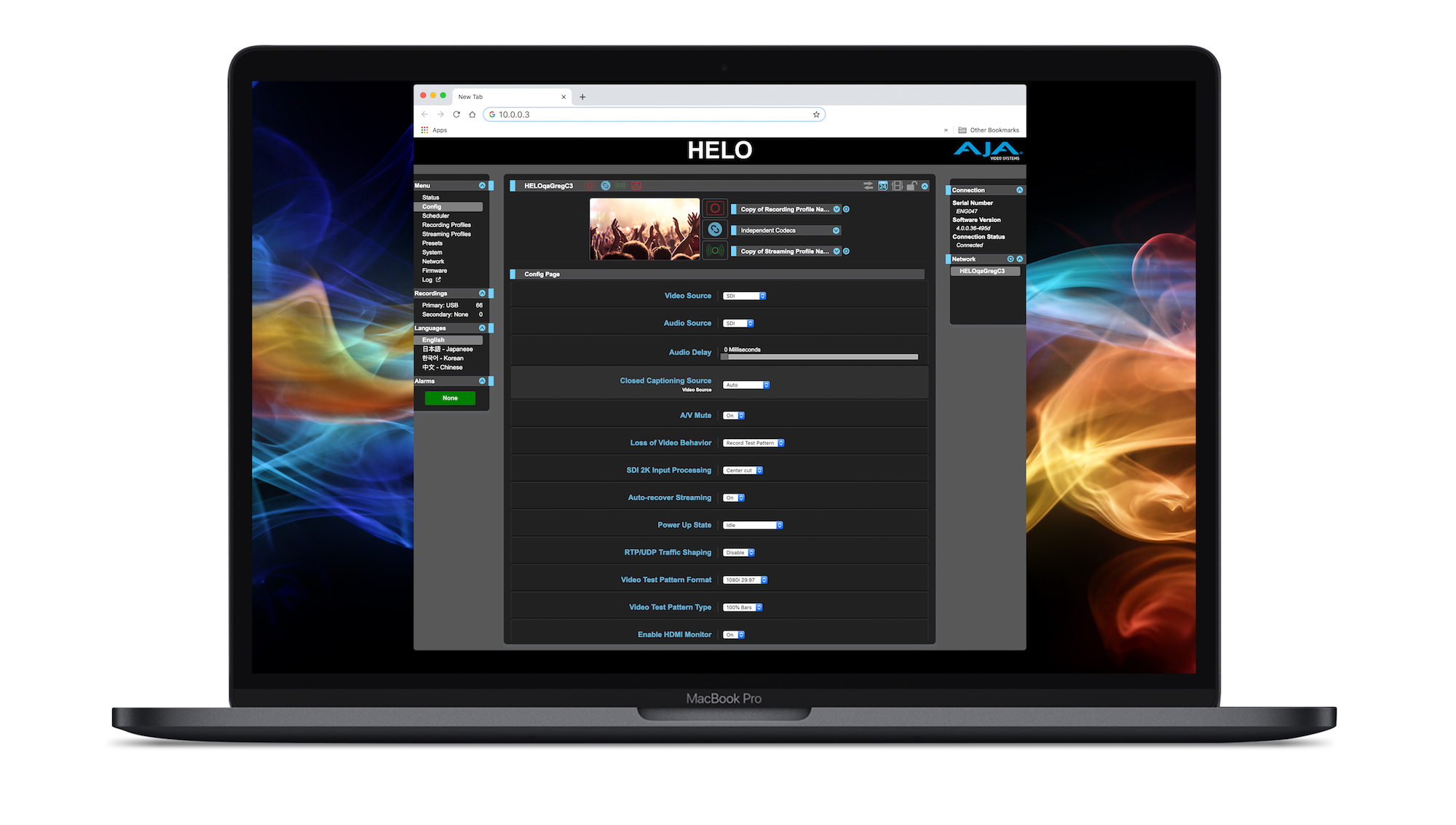As the quality of video equipment increases, it’s now possible to have a very capable, broadcast-grade video setup for your enterprise’s streaming needs. We reached out to some industry leaders in the streaming space to get their take on the latest trends and equipment, how client needs are shifting, and how broadcast best practices are influencing pro AV.
With the rapid evolution of technologies and the blurred lines between enterprise-grade streaming and consumer applications, high-end streaming will likely look very different 18 months from now. This article is a snapshot of where we are now and an industry, and what could lie ahead.
Latest Trends
Video streaming has become a core communication tool in many corporate environments, and for some, a primary one. Just a few years ago, there was a mystique around capturing and transporting a high-quality video signal. Flash forward to today, and video streaming has become an indispensable medium across all kinds of enterprises, and for all kinds of reasons. So, perhaps the number one trend, simply put, is “more.”
As the practice proliferates, it is also helping to maximize operational efficiencies. Because video streaming has become a corporate mainstay, companies want to minimize their dependency on dedicated IT and AV staff to support their streaming needs, other than coordinating with IT to ensure streaming traffic is not blocked on the corporate network.
“Departments want to be as operationally self-sufficient as possible, and need easy-to-use tools that enable them to stream even with little technical experience,” said Nick Ma, CEO and CTO of Magewell. “This is better for the IT and AV teams too, who can spend more of their time on higher-value projects and tasks and less time on basic operational support. “
Ma also pointed out that there are two different use cases for corporate streaming: internal streaming within a corporation (for training, employee town hall meetings, global communications for large teams, etc.) and streaming from a corporation to external viewers (shareholder meetings, public announcements, product launch events, etc.). In most cases, it’s important to take both into consideration.
Another trend is encoding for a broad audience. When it comes to external streaming, Kevin Ancelin, VP of worldwide broadcast sales for VITEC, said that a primary concern for his company is making sure their solutions offer the capability to ingest and encode SDI for transport to all the major OTT/social platforms. Social media has become essential both as a means of communication as well as a performance metric for many organizations.
Quality and Quantity
Having a consistent and dependable signal, no matter what the use case, is increasingly expected. Organizations are wise to the value of data and content, and they are making efforts to create better quality and more highly produced media for myriad applications ranging from training, to collaboration, to corporate culture development, and much more.

“Livestreaming is being constantly optimized,” said Sam Recine, director of sales at Matrox. “The ability to deliver live streaming content on many different devices at any location on earth, while balancing quality, latency, bitrate, and interoperability, is constantly improving.”
Load Balancing
Matrox’s Recine goes on to discuss a recent streaming hot topic: load balancing. He sees a shift from doing only “core streams” to the cloud and then doing all transcoding there, to the encoders acting as the capture point. They send multiple resolutions straight from the encoder simultaneously to help offload recurring transcoding expenses. Doing so helps reduce loss of quality during transcoding in the cloud, and to help reduce latency in livestreaming applications.
Similarly, on the recording side for on-demand streaming applications—which is still the bulk of the streaming market today—the ability to record in multiple resolutions during capture maximizes on-demand playback versatility.
Shifting Workflow Patterns
Multi-camera/multi-source workflows are attractive because they give audiences the customization of choosing different vantage points of a particular event, and allow you to easily weave camera feeds alongside presentation materials for a higher quality viewing experience.
“Consumers are now more used to seeing 4K/Ultra HD and HDR across their everyday viewing platforms, and it enhances the picture quality of their streams; as a result, we’re seeing greater demand for better bandwidth availability to support both,” said Bryce Button, director of productd marketing at AJA.
Looking specifically at standards, our experts agree that H.264 is still preferred, but as enterprises consider 4K, they’re starting to see more inquiries around H.265. While HEVC is appealing for internal corporate streaming applications because of its bandwidth efficiency, H.264 continues to be the go-to solution. H.264 is needed for compatibility with most external streaming applications and platforms (i.e. social media), and still offers the broadest viewing device compatibility for both internal and external uses. So 4K, while a big buzzword, currently remains more relevant for entertainment and sports streaming than for enterprise applications. In terms of sources, a majority of clients in enterprise want HDMI. But in the near future, expect to see a more hybrid approach with SDI and HDMI sources being converted into the IP space.
Latest Market Solutions
There were some themes that emerged when experts offered their opinions on recent market solutions in the space.
- More robust encoding capabilities on both the hardware and software side of the market;
- Shift to both PC-based and appliance based ecosystem for load balancing;
- Better cloud services for interfacing and delivering a wide range of UX experiences;
- Simplified image processing hardware and software, focused on feature extraction;
- More IP-capable hardware and software solutions to enhance participation in live and on-demand streaming applications.
At Magewell, Ma said “Our focus has been developing robust solutions that have plug-and-play simplicity, so even non-technical users can create high-quality streaming content. Our Ultra Stream standalone encoders, for example, allow users to stream to an internal server or to external third-party services with simple on-device buttons, or even through an intuitive smartphone app.”
VITEC’s Ancelin said his company has been rapidly responsive to evolving marketplace requirements. Recently, Facebook added the requirement of Secure RTMP streaming, aka RTMPS. VITEC quickly identified this requirement and added RTMPS to its line of T-21 OTT Streaming Media Solutions. That will continue to be priority for the solutions the company offers.
Hardware Offers Versatility
There so many paths you can take to livestream content. Some forward-thinking companies, like AJA, look to span the gamut of options. For example, Button pointed out the versatility of the company’s all-in-one device, AJA HELO. HELO has the added benefit of extremely low latency.

“HELO’s input can be easily sourced from a single source or from a switcher, which provides a line cut from multi-camera inputs,” Buttons said. “HELO then simultaneously streams the feed to your preferred platform (YouTube, Twitch, Facebook Live, etc.) while also producing an H.264 recording.”
In terms of sources, experts report a majority of clients in enterprise want HDMI. That said, the industry has developed a number of sophisticated approaches involving SDI, and IP is always a consideration. In the future, expect to see more hybrid approaches with SDI and HDMI sources being converted into the IP space.
The Marriage of AV and IP
As hardware solutions proliferate, IP solutions are booming to an even greater degree—and anufacturers in the enterprise streaming space are taking note. In fact, this ongoing trend is driving many recent innovations at Matrox.
“We are already supporting second- and third-generation applications of IP, including IP-to-IP capture and encoding workflows,” Recine said. “For example, we have products that can take in uncompressed video over 10G or 25G IP links. And we can share that video over high-bandwidth networks while simultaneously compressing and making that content available for low-bitrate portions of the ecosystem.”

No matter the solution options, clients still need compatibility with HDMI and SDI sources, as they don’t want to jettison their existing investments. As such, as the market transitions to AV-over-IP workflows, tools such as Magewell's Pro Convert family of NDI encoders and decoders are essential for bridging HDMI and SDI signals with the new IP architectures.
Broadcast and pro AV clients are also asking for simplicity and ease of use when building solutions so that components like capture and encoder products, cloud services, and delivery mechanisms well together, and without complexity or compatibility issues.
Broadcast Best Practices
Low latency has long been a requirement in broadcast, and it’s also quickly becoming the expectation in enterprise streaming—so it can help to use technology from companies with a strong history of providing solutions in broadcast environments.
By far, the best practice to focus on is “standards.” The early waves of AV over IP accepted single-vendor ecosystems, but that is rapidly changing. Now, sole source and/or proprietary encoding schemes work against AV providers. The market is demanding interoperability of legacy systems while fully leveraging the new wave of IP-based benefits. No enterprise wants to abandon systems that still provide tremendous value for them.
“IP-to-baseband and baseband-to-IP converters based on open standards are going to be very, very, very popular in AV, and begin replacing the AV matrix switch market,” said Matrox’s Recine. “SMPTE ST-2110 in particular has been adopted in live broadcast. There are hundreds of manufacturers building interoperable products. Now the attention has turned to AV, and organizations such as AIMS are beginning to promote the spec in the AV market while also collecting feedback to enhance the spec for AV-specific applications.”
Driving Momentum
As end users become more adept at mastering streaming technology (and let’s face it, they already are!), expect them to bring that expertise into the workplace. The wide array of solutions will likely converge into a few consolidated and universal platforms that nearly anyone can master. As the playing field levels, application of the technology can become more strategic and focused in terms of content quality, frequency, and technical superiority.
What Lies Ahead?
Nick Ma, Magewell: “Streaming will continue to become further entrenched in the enterprises’ internal and external communication strategies. That ease may ultimately lead to ‘technical invisibility,’ where the technology is so easy to use and pervasive that you don’t even notice it any more; you just use it naturally.”
Kevin Ancelin, VITEC: “Enterprise streaming will only continue to grow. The traditional streaming to TV set tops will decrease as more streaming is consumed to CE devices including, phones, tables, PCs, and smart TVs. We’ll see a proliferation of new OTT companies entering the marketplace.”
Bryce Button, AJA: “Video is one of the most powerful means of communication available for delivering a message, so we fully expect that the demand for video streaming in enterprise will continue to grow at breakneck speeds, with technology also growing to meet the demand.”
Sam Recine, Matrox: “The curated content market, also known as ‘enterprise video’ has so much value still to gain from machine learning and image processing technologies that we will see a gold rush for high-quality, low-bitrate content to record everything. I believe the content will be tested continuously to refine metrics of what people retain and what people enjoy consuming. And I believe the future of video is its usefulness.”

